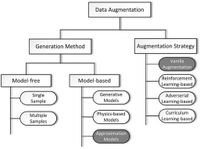Atmospheric turbulence poses significant challenges to the reliability of object detection systems, particularly those utilizing thermal imaging. A recent study conducted by researchers E. Uzun and E. Akagündüz, published in Scientific Reports, investigates how turbulence image augmentation techniques can drastically enhance the accuracy and robustness of thermal-adapted deep learning models against distortions caused by atmospheric conditions.
In the world of object detection, performance can be severely hindered by environmental factors such as atmospheric turbulence, which distorts images through blurring and noise due to variations in air density. With the pressure to develop systems that can effectively operate in real-world conditions, particularly in surveillance, defense, and search-and-rescue operations, addressing these issues head-on becomes crucial.
The authors explored three distinct approximation-based turbulence simulators—geometric, Zernike-based, and Phase-to-Space (P2S)—to generate turbulent training and test datasets. They experimented with state-of-the-art deep learning-based models, namely RTMDet-x, DINO-4scale, and YOLOv8-x, and assessed their performance both with and without the enhanced turbulence-specific augmentations.
By employing turbulence image augmentation techniques, the study aimed to improve the models' detection capabilities when exposed to distorted images, thereby increasing their efficacy in accurately identifying objects in challenging conditions. The implications of this research extend beyond theoretical importance, providing essential insights for deploying robust object detection systems.
The results were illuminating; utilizing turbulence-specific augmentations during model training led to significant enhancements in detection accuracy. The augmentations improved robustness not only in turbulent test conditions but also yielded superior performance when evaluating clean datasets. According to the authors, “Utilizing turbulence-specific augmentations during training can significantly improve detection accuracy and robustness against distorted turbulent images.”
As the analysis unfolded, notable differences in effectiveness among the tested models emerged. For instance, the results revealed that smaller objects benefitted significantly from the turbulence augmentation, as atmospheric distortions tend to have a pronounced negative effect on their detectability. The insights gleaned from the experiments also affirmed the varying degrees of improvement across different object detection architectures. “This pattern underlines the necessity of including turbulence specific augmentations to enhance detection accuracy in real-world scenarios affected by atmospheric distortions,” the authors noted.
The dataset used in the study, FLIR-ADAS v2, consists of 26,442 annotated thermal and visible spectrum frames. The researchers took a systematic approach, dividing the images into training and validation sets while exploring different levels of turbulence in the training dataset (gamma levels of 25, 50, 100, and 150). The experiments were meticulously designed to ensure relevance to real-world applications.
The study highlights three turbulence simulators, each offering unique advantages. The geometric simulator employs Gaussian kernel blurring; the Zernike-based method uses orthogonal Zernike polynomials to approximate aberrations, and the P2S Transform enhances image realism through learned basis functions. While employing these models required substantive computational resources, the results justify the investment, underscoring the importance of tailored turbulence training techniques.
Conclusively, the findings contribute significantly towards advancing the field of computer vision by emphasizing the necessity for turbulence-specific augmentation strategies. The researchers advocate for further exploration into more sophisticated simulation techniques, including data-driven methods, to capture atmospheric complexity more accurately.
As computer vision technologies are applied in various domains, these insights may pave the way for developing more reliable detection systems that can operate effectively even in adverse environmental conditions. With increasing interest in unlocking the full potential of thermal imaging for critical applications, the importance of refining data augmentation techniques cannot be overstressed.




